Kutná Hora hides numerous architectural and cultural treasures within its walls, giving an insight into historical times. This is a place that attracts tourists from all over the world, thanks to its unique monuments and its past associated with silver mining.
One of the most important and characteristic buildings in Kutná Hora is certainly the Cathedral of St. Barbara, which, together with the historical city center, is included on the UNESCO World Heritage List.
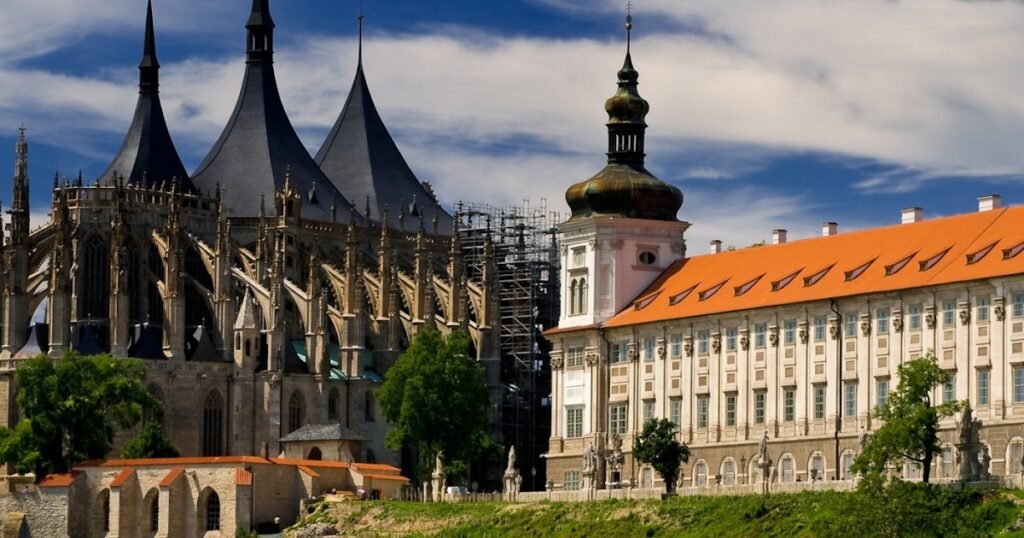
Another important building is the Church of All Saints with the Skull Chapel in Sedlec, distinguished by its decorations with human bones and skulls. It is a macabre and at the same time unique vision that combines medieval traditions with respect for the dead. The city of Kutná Hora once bustled with life thanks to silver mining, which contributed to its prosperity and wealth. Today we can follow this history by visiting the Silver Mining Museum.
The medieval center of Kutná Hora, on the other hand, is made up of wonderful historic tenement houses and churches, which create a unique atmosphere of this place. We will find here numerous cafes and restaurants where you can taste traditional Czech dishes and local beers.
Location
Kutná Hora is a small town in Central Bohemia, about 70 km east of Prague in Czech Republic.
The Skull Chapel in Kutna Hora
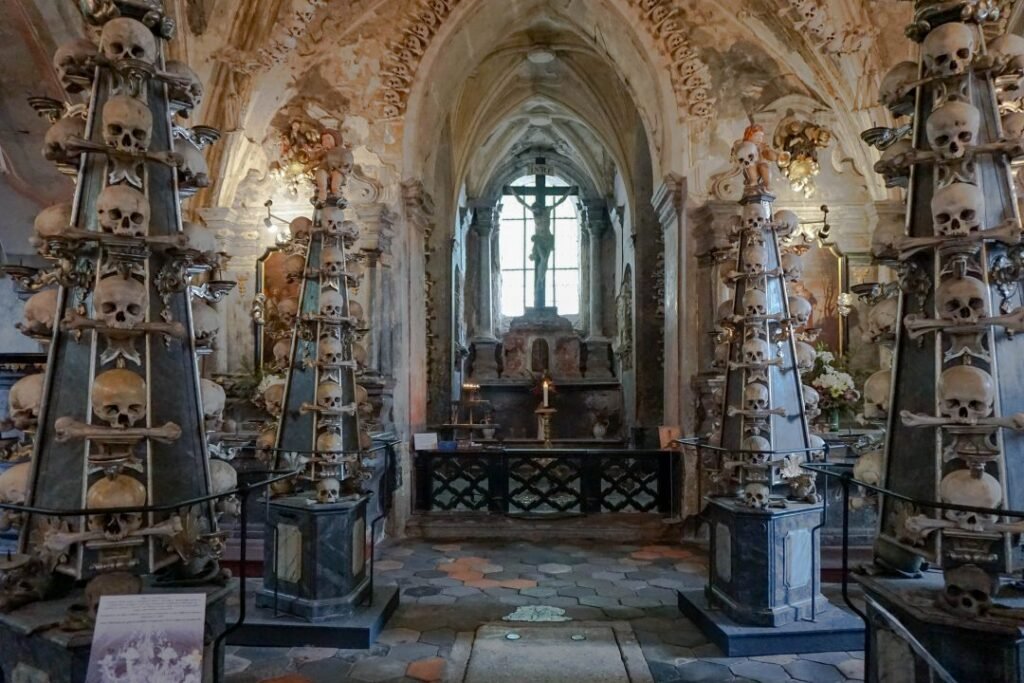
The Sedlec Ossuary is commonly referred to as the Bone Church: The bones of tens of thousands of people collected over many centuries have been placed in unique decorative patterns. The full name is the All Saints Cemetery Church.
The church is part of the UNESCO World Heritage Site, which includes the historic part of the neighboring town of Kutná Hora. People in the past believed that relics had almost magical powers, connecting people with the spirit world. Therefore, a cemetery associated with Jesus would be seen as a direct highway to heaven.
Church of Saint Barbara
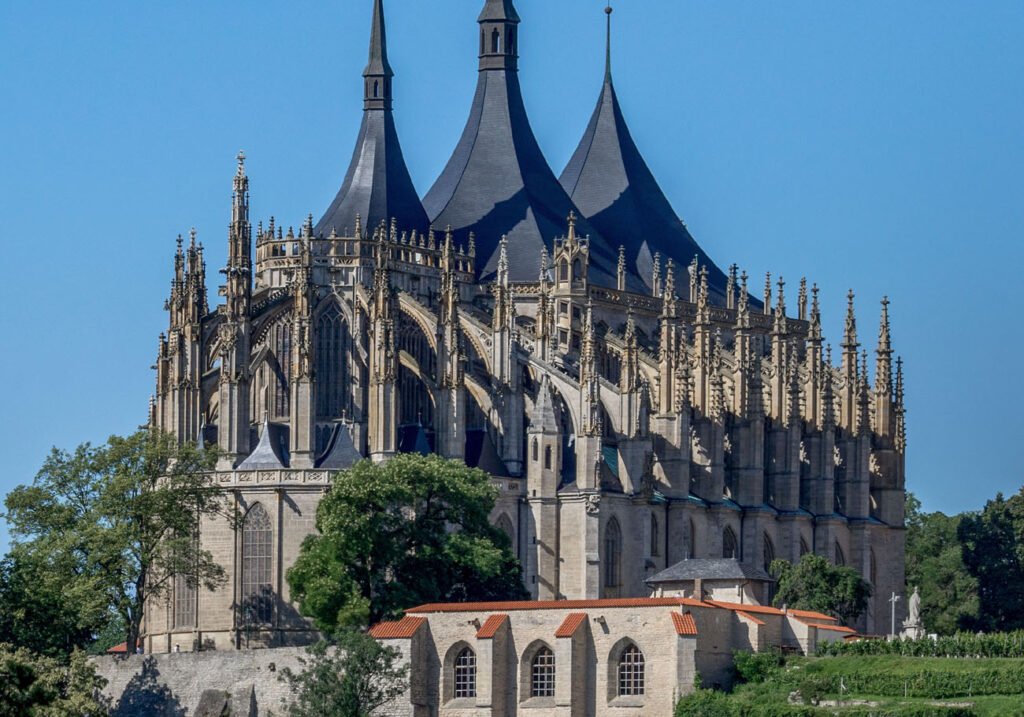
The Gothic landmark of the royal town of Kutná Hora, a UNESCO World Heritage Site – this is the Cathedral of St. Barbara. A five-nave structure dedicated to the martyr representing the mining profession. Inside, medieval frescoes plus Baroque and Neo-Gothic artworks astound. It is by far the most spectacular monument in Kutná Hora.
Vlašský Dvůr

The Italian Court is a former royal mint and royal palace, a national cultural monument of pan-European significance. The original fortified residence from the end of the 13th century was rebuilt into the central royal mint by King Wenceslas II in 1300.
Only the so-called mints on the ground floor have survived from the original mint, the facade of which is decorated with the coats of arms of the cities from which the minting of coins was transferred.
GASK – Central Bohemian Gallery, contributory organization
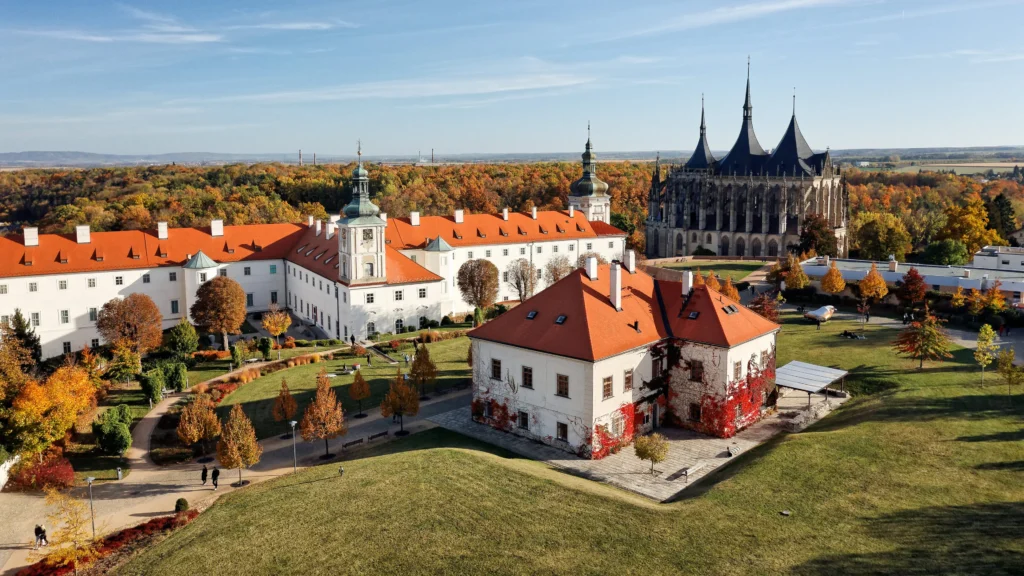
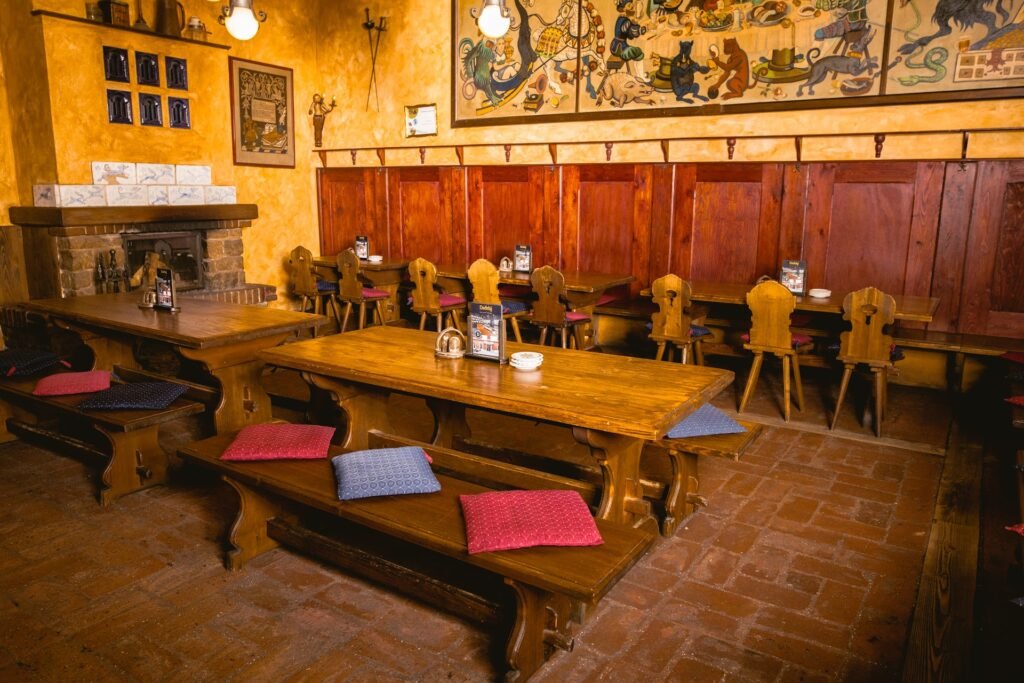
GASK – Gallery of the Central Bohemian Region is located in the unique premises of the former Jesuit college in Kutná Hora. The three wings on two floors of the Jesuit college host changing exhibitions.
GASK’s collections represent an exceptionally comprehensive and high-quality overview of Czech fine art from the end of the 19th century to the present day.
Stone well in Kutna Hora
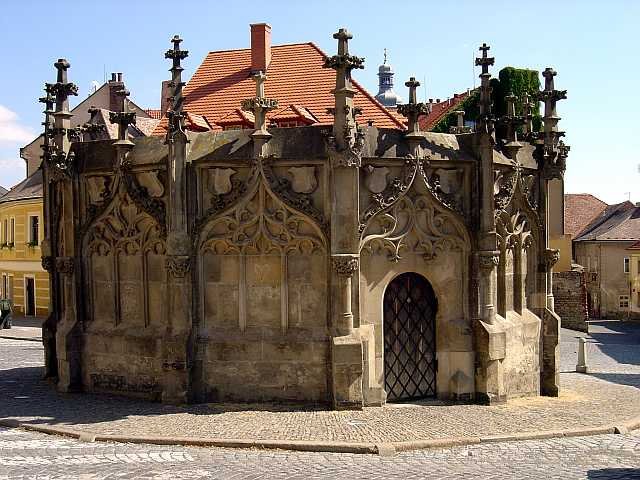
The beautiful fountain, dating back to the late 15th century, is a precise symbol of how the locals valued their precious water. In the Middle Ages, water had to be brought to the city through wooden pipes several kilometers long, opening into several water tanks.
The fountain is located on a picturesque square and is adjacent to several representative city houses. Until 1890, it served as a drinking water tank.
Cathedral of the Assumption of the Blessed Virgin Mary and St. John the Baptist

The building it is one of the brightest Gothic cathedrals ever owing to its 106 windows, the largest of which is 14 metres high, located in the west façade of the cathedral.
The western façade, where the main entrance to the church is located, is the most interesting in terms of architectural design. It was designed by the Baroque architect who embellished elements in a unique building style called Baroque Gothic at the beginning of the 18th century.
The Stone House

The Stone House located in Kutna Hora in the Czech Republic is one of the most important architectural monuments. The house is easily identified by a high triangle-shaped gable with Gothic windows, rich decorated sculptures, Gothic pinnacles and a double gate. It is part of the historic core of the city, which is listed as a UNESCO World Heritage Site.
Hrádek: Czech Silver Museum
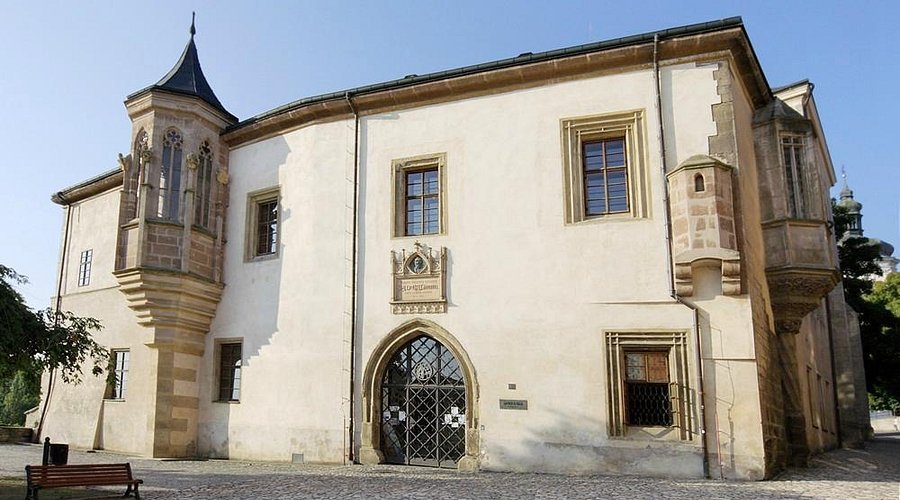
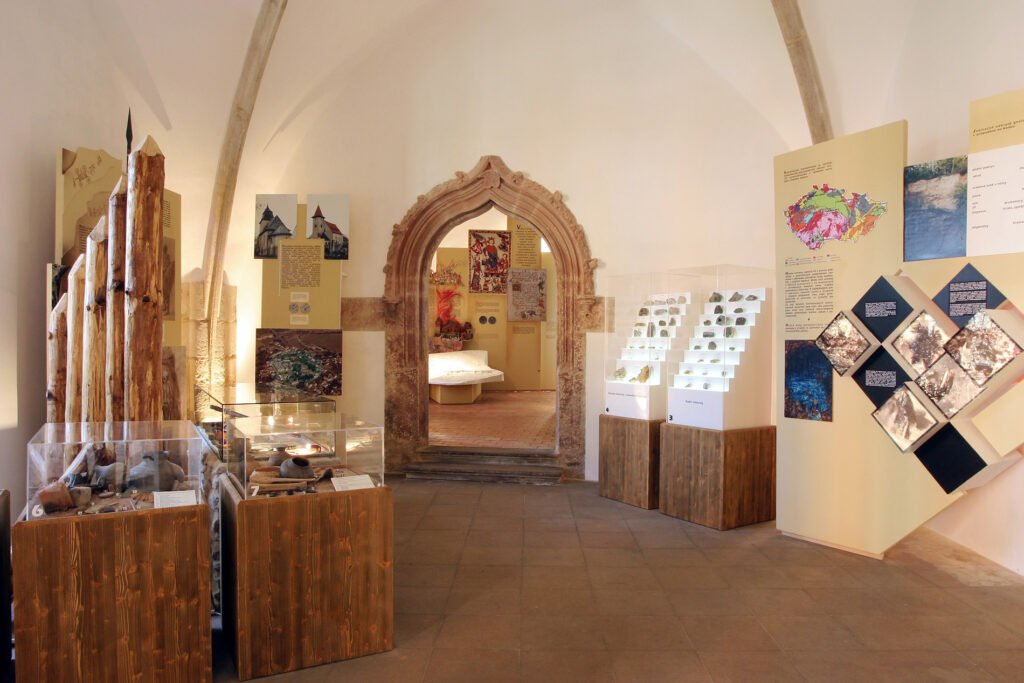
The Czech Silver Museum is located in the Gothic building of the historic Hrádek (Small Castle) at Barborská 28. The museum was opened in 1996. Its exhibits are divided into two routes. One shows the history of Kutná Hora, and the other focuses on silver mining, ore processing and the lives of miners. Both routes will take you 2.5 hours to complete.
